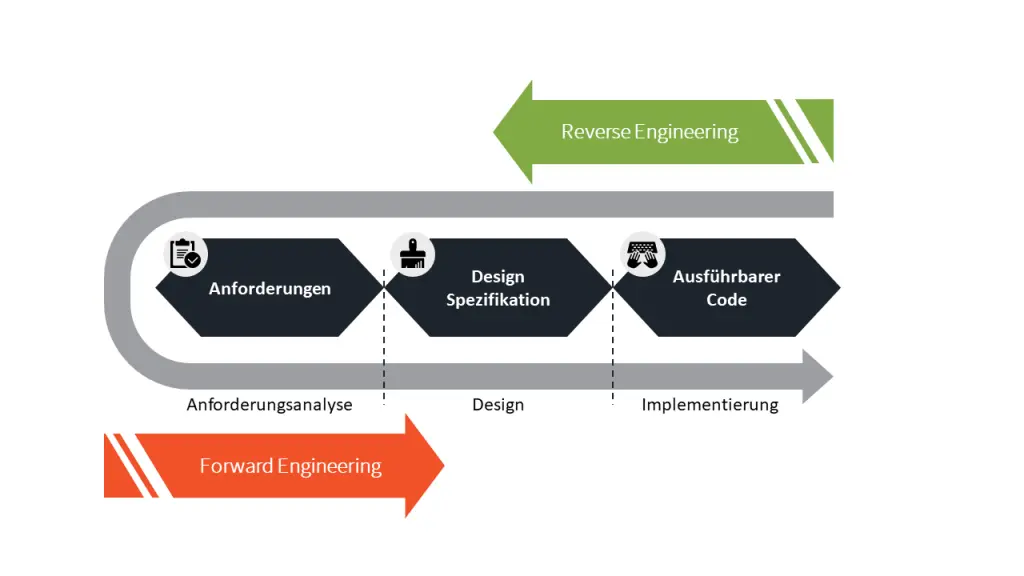When it comes to replacing old systems with new IT systems, there is often no avoiding the subject of reverse engineering. Insufficient or non-existent documentation of the functionality of the old systems complicates the specification of the target functionality of new systems. The reverse engineering process, which originally came from mechanical engineering, provides information on how the individual program components work and thus facilitates a complete understanding of functions.
Reverse engineering allows users to reverse the development process of a software, in other words to “dismantle” the software, and thus enable valuable insights into its functionality. Reverse engineering is possible down to the source code level of a system. Based on this, the architecture and the functionality of the software can be analyzed, understood and documented. These steps serve, on the one hand, to optimize existing systems or to develop new systems that should contain the functions of the old systems.
Reverse engineering of software is usually understood to be one of the following three processes:
Restoring the source code of software
The source code is the human-readable text of software, written in a programming language. The compiler converts this code into a machine language that the computer can read. A decompiler is used to reverse this step. Most of the time it is not possible to reconstruct the entire source code. Since the goal is to understand the idea behind the software, it is not necessary to analyze the entire original code. Behavioral analyzes of the software can already be carried out with incomplete code and documentation generated from it.
Analyze communication protocols from software
Reverse engineering can also be used to develop unknown communication protocols from software, to connect new drivers or to define requirements for interfaces.
Subsequent model creation of a software
The reconstructed source code is transferred to a model that can then be further processed. The graphic modeling language UML is the most widely used language for graphic specification, construction and documentation of software.
Possible applications
Reverse engineering fulfills a large number of possible applications:
- Quality management and further development of our own software
- Analysis of communication protocols for software
- Tracking down software bugs
- Understand the functionality of the software
- Improvement of software compatibility
- Documentation creation
With the help of reverse engineering, Sysparency offers an automated method for creating documentation that simplifies the process of subsequent software documentation and enables a more straightforward transformation.

